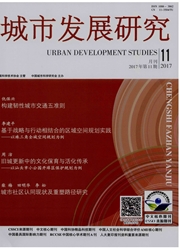

 中文摘要:
中文摘要:
城市营运体系涵盖经济系统、人口系统、金融系统、能源系统、环境系统与公共服务系统,新型城镇化应当是这六个子系统全面协调发展的城镇化。首先从理论上分析了六个子系统之间的相互作用与耦合协调发展关系;然后以全国30个省份与直辖市为研究对象,综合评价了六个子系统;利用耦合协调度指标度量各省市六个子系统的耦合协调发展水平;利用盯收敛检验准则各省域耦合协调发展水平的收敛情况;并进一步利用PVAR模型实证度量了六者之间的相互作用关系,解析了欠协调的成因。研究表明,中国省域耦合协调发展水平总体上较高,具有集聚性差异;经济越发达,综合实力越强的省份的耦合协调程度越高;2004—2012年间耦合协调状况并不具有收敛性。
 英文摘要:
英文摘要:
The operation system of the urban includes six subsystems:the system of urban economy, urban population system, urban financial system, urban energy system, urban environment and urban public service system, new-type urbanization means that the six sub-systems should be comprehensive, coordinated. Firstly, theoretically analysis the interaction and coupling relations of coordinated development between the six subsystems. Then take 30 provinces of China as the research objects, comprehensively evaluate the six subsystems. By using three indicators ( coordination degree, comprehensive development level and the degree of coupling) measure coupling coordinated development and convergence of the six subsystems in 30 provinces, and using the PVAR model analysis of the interaction between the six subsystems, further explaining the causes of less coordinated.
 同期刊论文项目
同期刊论文项目
 同项目期刊论文
同项目期刊论文
 期刊信息
期刊信息
